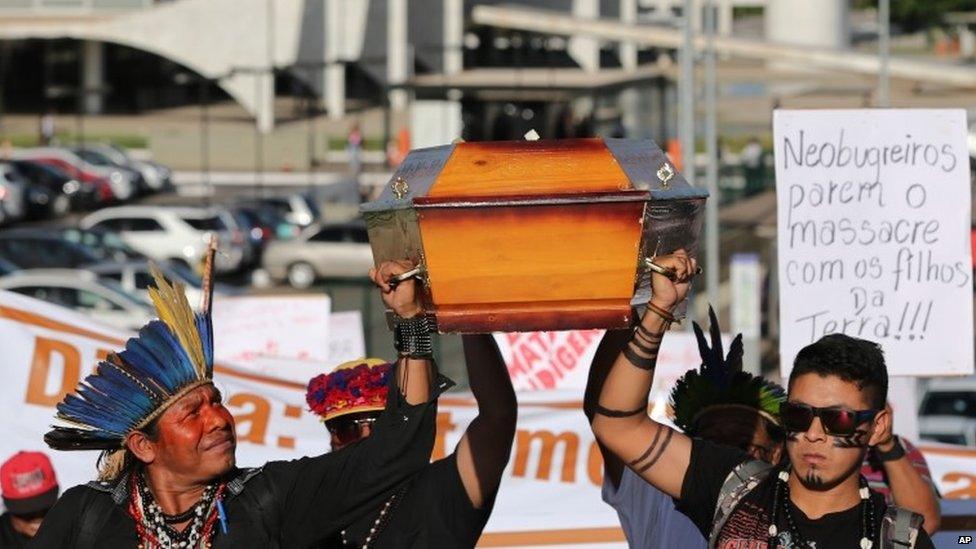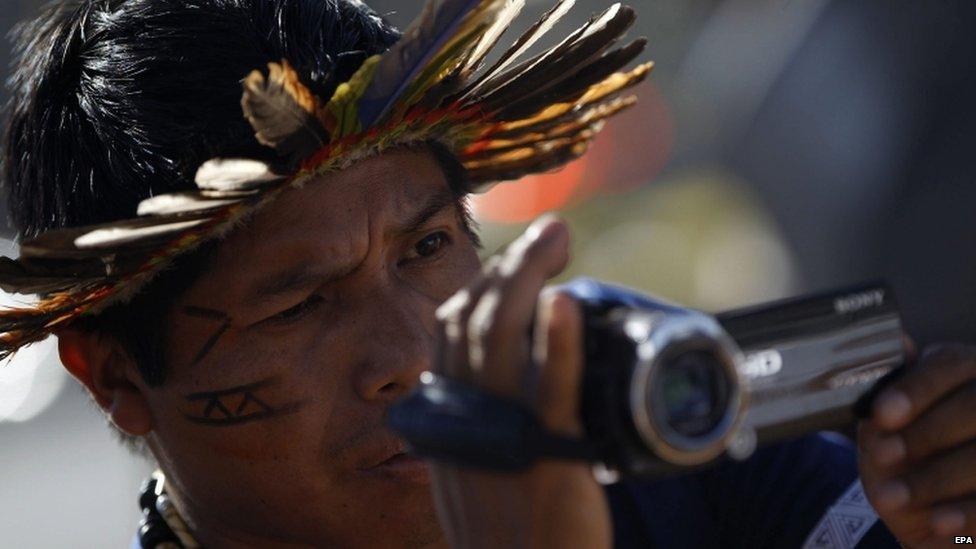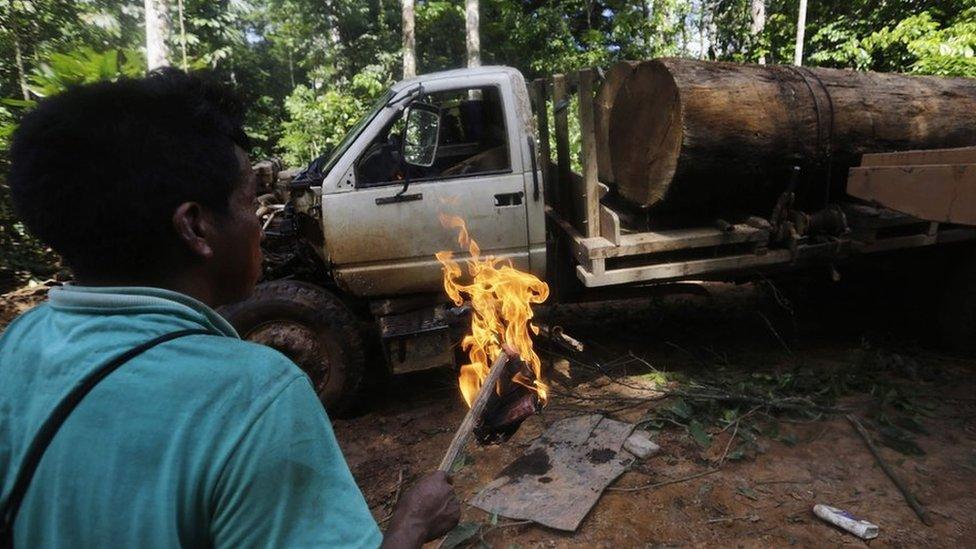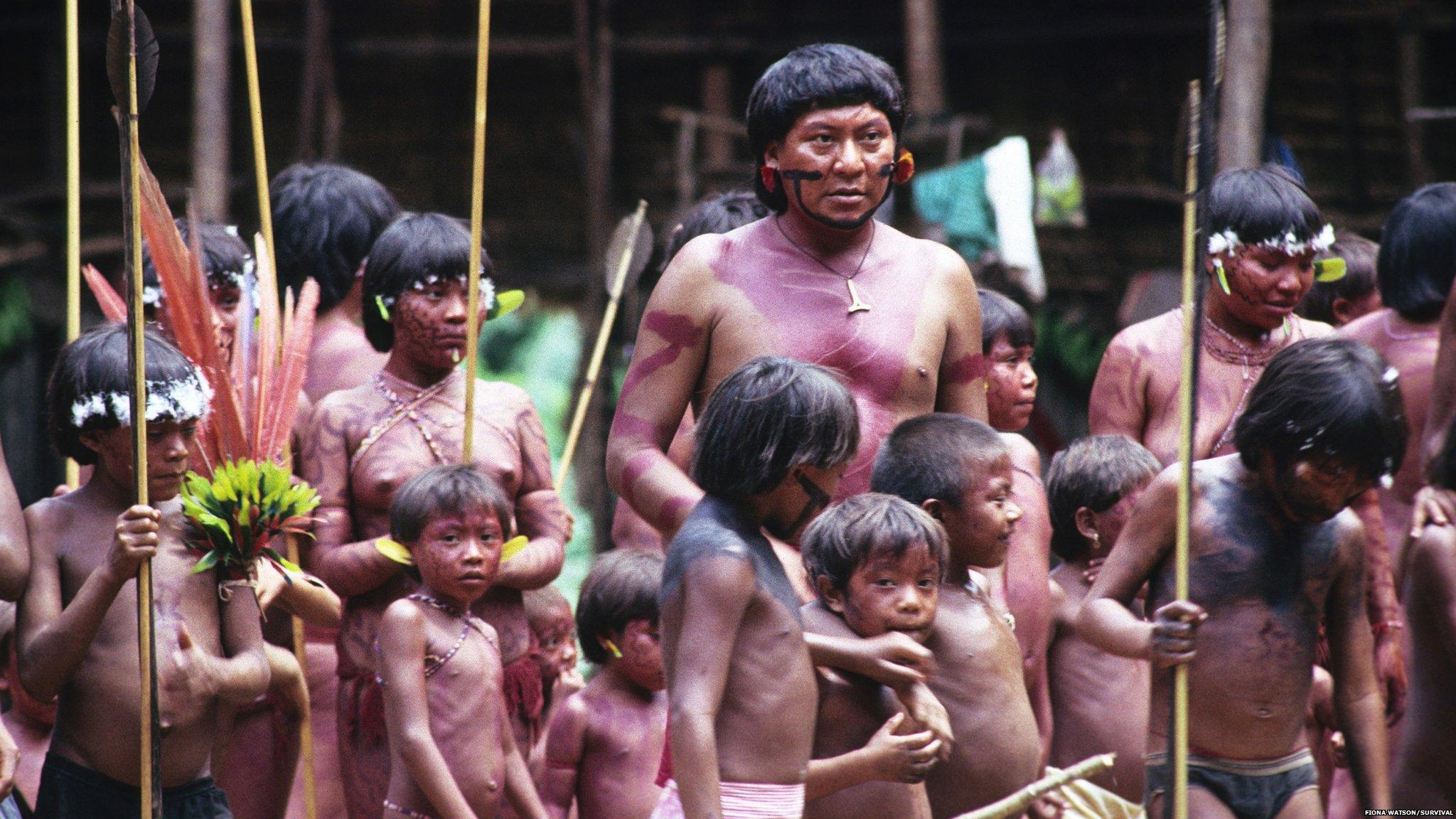Brazil indigenous group Guarani-Kaiowa 'attacked'
- Published

There were protests in the capital, Brasilia, after the death of Semiao Vilhalva
Members of the Guarani-Kaiowa indigenous community in western Brazil say they have come under attack from local farmers.
A group of armed men in about 30 vehicles drove onto their land in the state of Mato Grosso do Sul and began to shoot randomly, they reported.
They said they had to run for their lives and hide in a nearby forest.
Tension has been high since an indigenous leader was killed during a land occupation protest a week ago.
Federal troops have been sent to the area to try to restore order.
Prosecutors have opened an investigation into allegations that local farmers have set up a militia to fight the indigenous groups in Mato Grosso do Sul.
'Warriors pulled back'
The latest reported incident took place in the municipality of Douradina.
The attack happened on Thursday afternoon but has only now been reported.
"They came in and began to shoot everywhere," said indigenous leader Ezequiel Guyra Kambi'y.
"Our warriors began to pull back, but they kept pushing, driving towards us and shooting. We had to run away and hide in the forest."
The farmers returned in the evening and fired more than 50 shots, he added.

A member of the Guarani-Kaiowa tribe recorded the demonstration outside the Presidential Palace in Brasilia
The violence started when about 1,000 Guarani-Kaiowa occupied five ranches on 22 August, taking hostages who were later released.
A week ago, indigenous leader Semiao Vilhalva was killed when farmers tried to retake the ranches.
The tribe says those are their ancestral lands, which had been stolen.
The Brazilian Indigenous Agency (Funai) has already designated the area as an indigenous territory, but farmers got an injunction earlier this year suspending the process.
The state of Mato Grosso do Sul is a major cattle raising and soya producing area and has a long history of clashes between indigenous communities and farmers.
Many Guarani are forced to live in overcrowded reserves or in makeshift camps on the roadside where malnutrition, disease and suicide are high.
- Published3 September 2015

- Published5 September 2014

- Published29 July 2014
